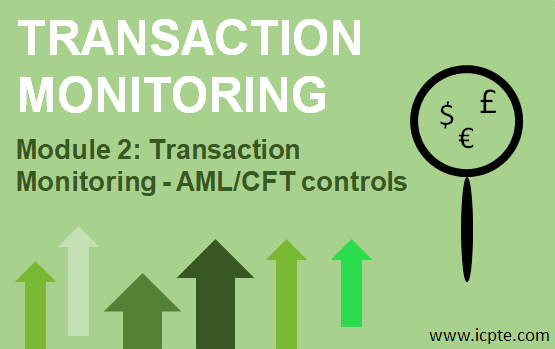The Institute of Continuous Professional Training and Education (ICPTE) offers an extensive variety of Pre-Recorded and Live Online Courses created by Professional and qualified Instructors with years of experience in their field.
ICPTE platform allows You the flexibility to watch online pre-recorded seminars at Your own convenience, at Your own pace, in Your own time and place. Start watching a seminar today and complete it at Your own time. You can have access from anywhere. We work with professional and qualified instructors with years of experience in their field.
One of the more popular AML seminars is the “Transaction Monitoring – AML Transaction monitoring rules”.
Module 2: Transaction Monitoring – AML/CFT controls
There are many local and global AML regulations that financial companies must comply with. However, the Financial Action Task Force (FATF) sets the standards that are tied to AML and CTF procedures. FATF recognizes the following factors as determinants of the proper extent of AML/CFT controls:
- The diversity of a financial institution’s operations
- The nature, scale, and complexity of the business
- The extent to which the financial institution is dealing through intermediaries, third parties, or non-face-to-face access (if applicable)
- The distribution channels that are used
- The volume and size of transactions
- The degree of risk that is associated with each area of the financial institution’s operation
- The customer, product, and activity profiles of the financial institution.
Who needs transaction monitoring?
The simple answer is: any financial institution.
In general any company that is considered a mover of money is required by law to take the necessary steps to protect customers from security breaches, fraud, and other forms of financial crime. This includes, but is not limited to:
- Banks
- Money services
- Money Transfer companies
- Financial services
- FinTech companies
- Cryptocurrencies
- Brokerages
- Insurance companies
- Legal Professionals
- Accountants and Accounting Firm
- Investment firms
- Designated non-financial businesses and professions (DNFBPs)
- Real estate agents
AML transaction monitoring process
You can choose to build your own transaction monitoring system, OR You can consider a Know Your Transaction (KYT) solution provider. Before implementing either option you should take the following steps:
- STEP 1: Risk Assessment – Understand client risk factors
- STEP 2: Establish internal policies
- STEP 3: Determine elements of suspicious behavior
- STEP 4: Define a suitable transaction monitoring solution
- STEP 5: Create Transaction Monitoring Rules for each risk
- STEP 6: Set up and Alerts
- STEP 7: Notify compliance teams
- STEP 8: Optimize Rules Over Time
- STEP 9: Create Cases and Perform Investigations
- STEP 10: File Suspicious Activity Reports (SARs)
- STEP 11: Ongoing Maintenance of the AML Monitoring System
STEP 1: Risk Assessment – Understand client risk factors
The first step in creating a transaction monitoring system is performing a risk assessment.
- How are current and new customers handled?
- What features are you offering to customers, and what is the risk associated with each one?
- Different clients carry different risk influenced by a range of current and historical factors, such as industry and location.
- It’s crucial to have a deep understanding of client risk factors and the risks you take on as a financial institution to ensure you provide adequate coverage for these risks.
- Apply a risk-based approach:
- You should carry out formal risk assessment of money laundering, terrorist financing, and other financial crimes.
- The risks vary based on the business’s products, customers profiles, and the nature and frequency of transactions.
- Once assessed, these risks should form the foundation of a transaction monitoring system.
- For example, once you identify which types of customers present a higher risk of money laundering, you can set a more frequent and intensive ongoing monitoring of their transactions.
- You should carry out formal risk assessment of money laundering, terrorist financing, and other financial crimes.
STEP 2: Establish internal policies
Module 1: What is AML transaction monitoring?
Module 3: AML transaction monitoring process – STEPS to create a transaction monitoring system
Attend our Pre-Recorded Online Course “Transaction Monitoring – AML Transaction monitoring rules”, learn all eleven STEPs of how to build your own transaction monitoring system and gain 5 CPDs.


